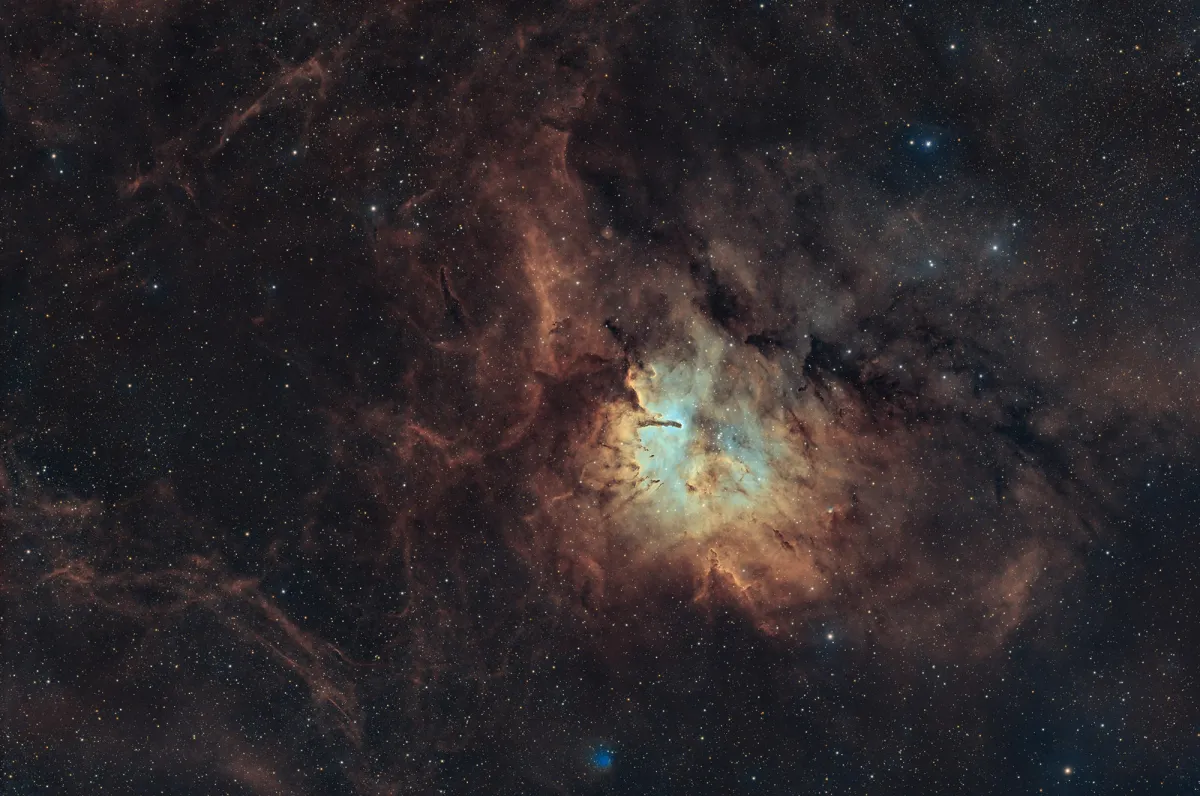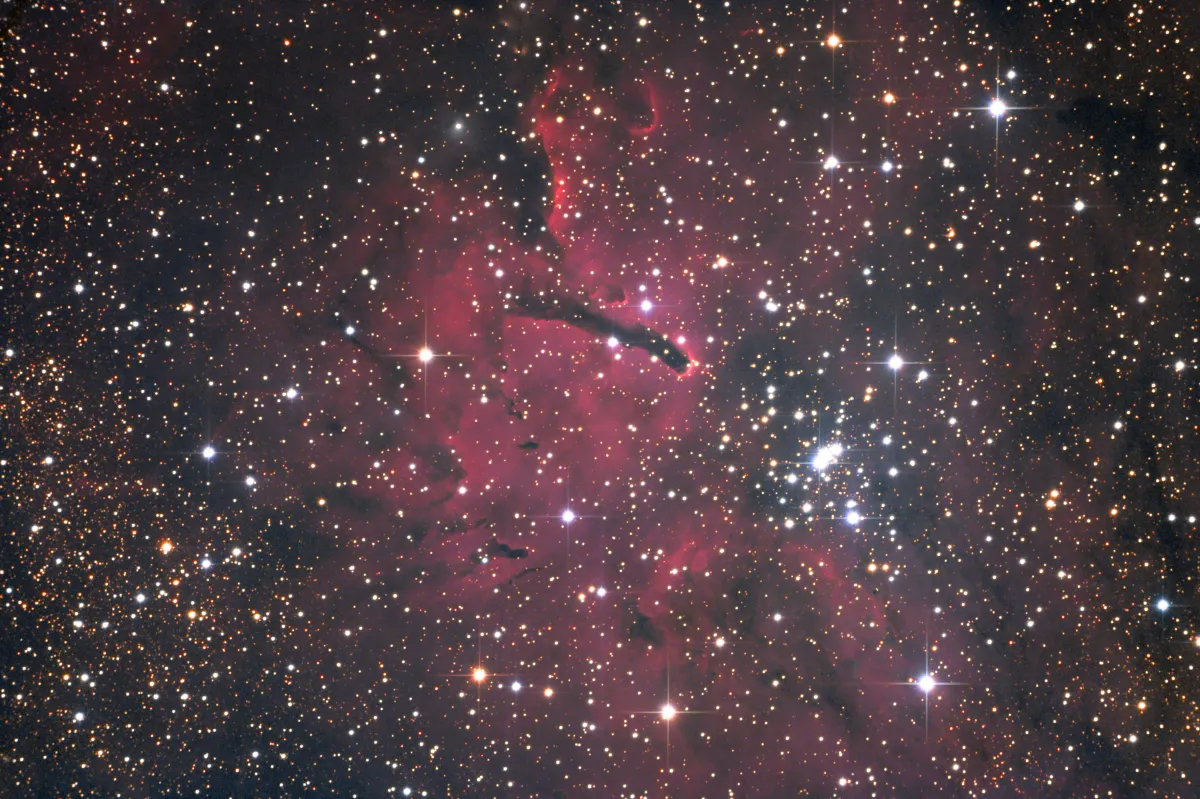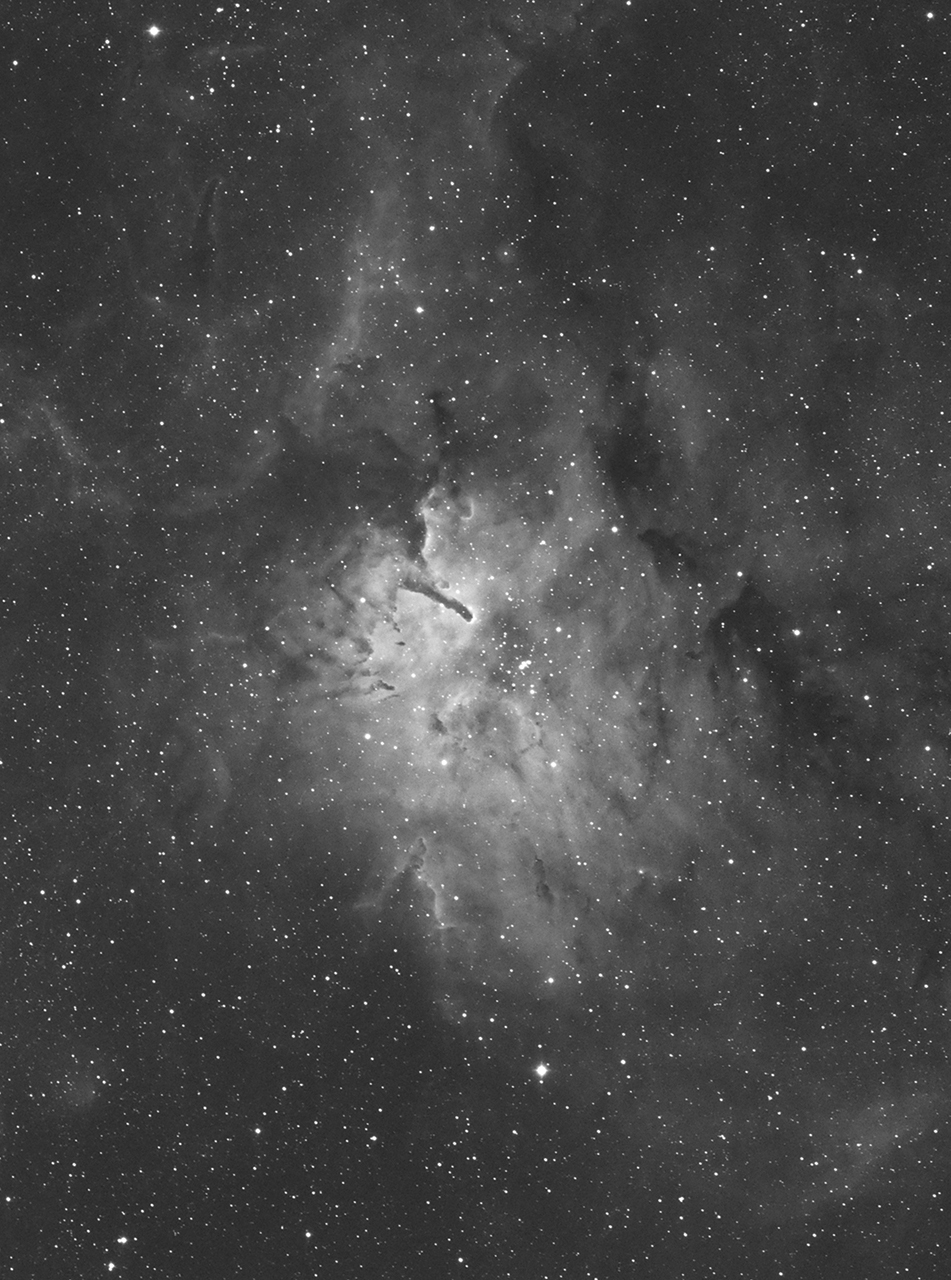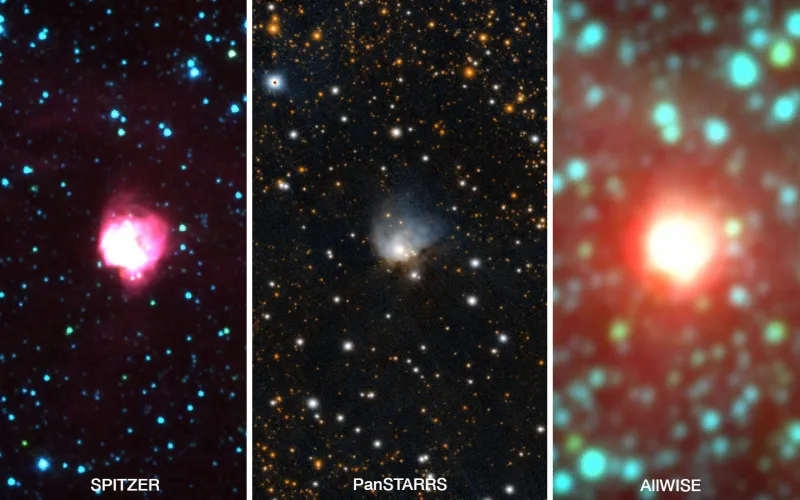Cluster NGC 6823 with Emission Nebula Sh 2-86



History
The open star cluster NGC 6823 was discovered on 17th July 1785 by the German-British astronomer William Herschel with his 18.7" reflecting telescope. [277] He described it as a «cluster, fairly rich in stars, oblong, stars 11th to 12th magnitude». [313] At that time he did not notice the emission nebula surrounding the star cluster.
On 7 August 1864, the German astronomer Albert Marth discovered the small emission nebula NGC 6820, which he described as «faint, small, round, brighter in the centre». He was on the island of Malta at the time, observing the sky with William Lassell's 48 inch f/9.4 Newtonian telescope. [277, 313] Some mistakenly equate NGC 6820 with the emission nebula around star cluster NGC 6823, including Roger W. Sinnot in his NGC 2000.0 catalog revised in 1988. [?] However, the description and position given back then fit the small emission nebula about a quarter degree southwest of the centre of the open star cluster.
The American astronomer Stewart Sharpless found the large emission nebula Sh 2-86 (LBN 059.38-00.15) around the open star cluster NGC 6823 while searching the photo plates of the «Palomar Observatory Sky Survey» made with the 48 inch Schmidt telescope. He published This discovery together with a total of 313 H-II regions in a catalog in 1959. He also incorrectly gave NGC 6820 as the nebula around the star cluster NGC 6823. [310]

Physical Properties
This object is a star-forming region. The distance of the star cluster NGC 6823 is given rather imprecisely with 1.7 kpc to 6.3 kpc (5500 to 20'000 light years). [145] He is probably closer to the end of this range. The star cluster features a central trapezoidal system BD+22°3782 with bright O- and B-type stars. About 92 stars brighter than 13 mag belong to the cluster, which is divided into an inner and outer area. The Hertzsprung–Russell (HR) diagram of both regions shows a well-defined upper main sequence with an estimated age of 2 million years. Another pre-main sequence population with an estimated age of 200'000 to 500'000 years in the outer region may have been produced by an earlier supernova explosion from one of the massive O stars at the centre of NGC 6823. [400]
| Name | RA | Dec | Type | bMag | vMag | Dim | MD | Dreyer Description | Identification, Remarks |
|---|---|---|---|---|---|---|---|---|---|
| NGC 6820 | 19 42 28.0 | +23 05 15 | EN | 15.0 | 0.5 × 0.5 | 1.850 | F, S, R, bM | GC 5945; IRAS 19403+2258; knot in Sh2-86 | |
| NGC 6823 | 19 43 10.0 | +23 18 00 | OCL (I3pn) | 7.1 | 7 | 1.893 | Cl, eRi, E, st 11…12 | WH VII 18; h 2049; GC 4512; OCL 124; LBN 135 |
Finder Chart
Open star cluster NGC 6823 is located in the constellation Vulpecula. On 17 July it is in opposition to the Sun and crosses the meridian at local midnight. The best observation time is March to December.
